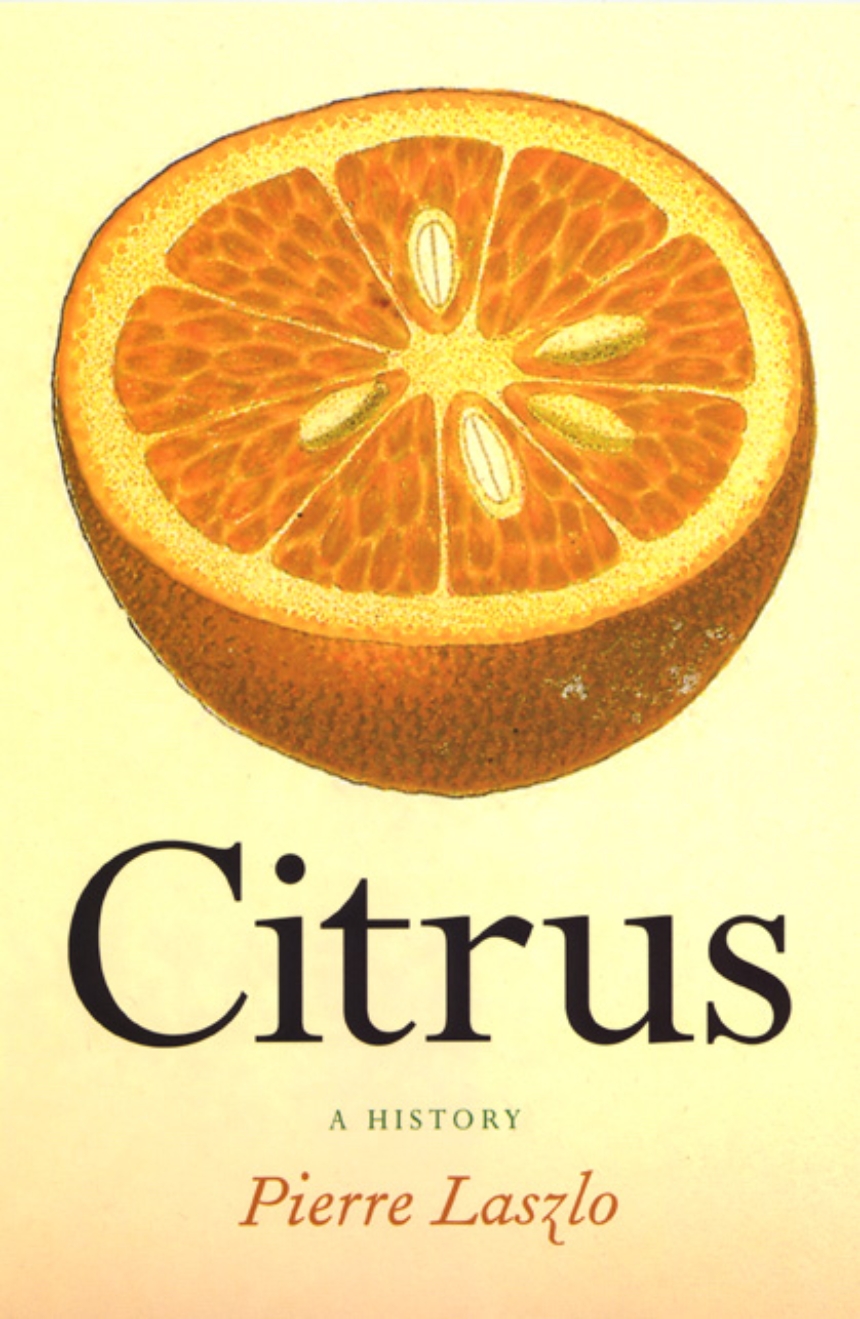Citrus
A History
Walk into your local grocery store and down the produce aisle, and you’ll find a dazzling array of citrus, from navel oranges and clementines to grapefruit and key limes—and sometimes even more exotic fare like the Japanese yuzu or the baboon lemon. Nearly 100 million tons of citrus are produced globally every year, but where did these fruits first come from? How did they find their way into the Western world? And how did they become both a culinary and cultural phenomenon?
Pierre Laszlo here traces the spectacular rise and spread of citrus across the globe: from Southeast Asia in 4000 BC through North Africa and the Roman Empire to early modern Spain and Portugal, whose explorers introduced the fruits to the Americas during the 1500s. Blending scientific rigor with personal curiosity, Citrus ransacks over two millennia of world history, exploring the numerous roles that citrus has played in agriculture, horticulture, cooking, nutrition, religion, and art—from the Jewish feast of the Tabernacles through the gardens and courts of Versailles to the canvasses of Vincent van Gogh to the orange groves of southern California and the juicing industry of today.
“Laszlo . . . has approached the lore of citrus fruit with the élan of a master chef (the man is French, after all), mixing history, economics, biology and chemistry to produce a book that will bring a smile to readers of every taste.”—Natural History
“Altogether charming, eccentric, erudite, and definitely worth the price.”—Times Higher Education Supplement
“Stimulating. . . . Laszlo shows that the citrus fruit ‘is a treasure trove of chemicals that are highly useful to humankind’—which also happens to taste wonderful.”—Sunday Times (UK)
“A short but brilliant account of 6,000 years of citrus fruits that should be devoured with fervor.”—Financial Times
“Did you know there are a billion citrus trees under cultivation, or that grapefruit juice may potentiate the effects of Viagra? Citrus mines over two millennia of history to explore the spread of these fruits out of Asia, their commercialization in the United States, and enduring symbolism the world over.”—New Scientist
“Did you know there are a billion citrus trees under cultivation, or that grapefruit juice may potentiate the effects of Viagra? Citrus mines over two millennia of history to explore the spread of these fruits out of Asia, their commercialization in the United States, and enduring symbolism the world over.”—New Scientist
Read six citrus recipes.
288 pages | 20 color plates | 6 x 9 | © 2008
Biological Sciences: Botany
Economics and Business: Economics--Agriculture and Natural Resources
History: General History
Reviews
Table of Contents
Acknowledgments
Prologue: Letter to a Fellow Writer
One Domestication of Exotic Species
1 Introduction, Including a Definition of Citrus Plants and Fruit
2 Transplantation to Europe
3 Acclimatization to the New World
4 Nurturing Citriculture
Two Mining Value from Citrus
5 California Dreamin’
6 Making Lemonade out of Lemons
7 Drinking the Orange
8 Extracting the Essence from the Peel
Three Symbolic Extractions
9 Symbolic Meanings of Citrus
10 Images of Citrus in Prose
11 Images of Citrus in Poetry
12 Fruit as Image
13 Preserving Nature—or Changing It?
14 Make It Scarce?
Epilogue: Answer from a Fellow Writer
Selected Notes
Index
Prologue: Letter to a Fellow Writer
One Domestication of Exotic Species
1 Introduction, Including a Definition of Citrus Plants and Fruit
2 Transplantation to Europe
3 Acclimatization to the New World
4 Nurturing Citriculture
Two Mining Value from Citrus
5 California Dreamin’
6 Making Lemonade out of Lemons
7 Drinking the Orange
8 Extracting the Essence from the Peel
Three Symbolic Extractions
9 Symbolic Meanings of Citrus
10 Images of Citrus in Prose
11 Images of Citrus in Poetry
12 Fruit as Image
13 Preserving Nature—or Changing It?
14 Make It Scarce?
Epilogue: Answer from a Fellow Writer
Selected Notes
Index
